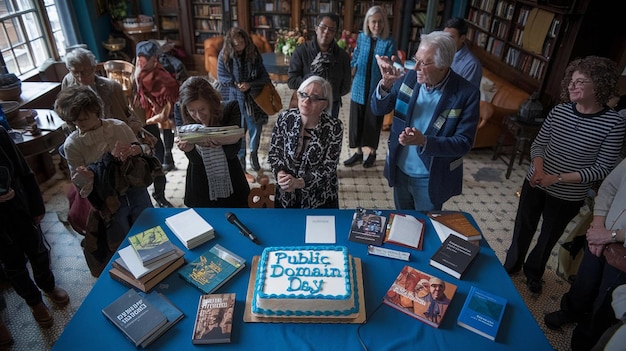Marginalized Voices in US Literature: A Critical Analysis

Analyzing the Representation of Marginalized Voices in Contemporary US Literature Through a Critical Lens involves examining how authors portray characters from underrepresented groups, challenging dominant narratives and promoting social awareness.
Contemporary US literature offers a diverse landscape of narratives, but how effectively do these stories represent marginalized voices? Analyzing the Representation of Marginalized Voices in Contemporary US Literature Through a Critical Lens allows us to understand power dynamics, social justice issues, and the ongoing struggle for inclusivity within the literary world.
The Importance of Representation in Literature
Representation in literature goes beyond mere tokenism; it shapes perceptions, challenges stereotypes, and empowers individuals to see themselves reflected in stories.
Why Representation Matters
Accurate and nuanced representation allows marginalized groups to feel seen and validated. It provides a platform for their experiences and perspectives, creating a more inclusive literary landscape.
Impact on Readers
When readers encounter diverse characters and stories, it broadens their understanding of the world and fosters empathy. This can lead to greater social awareness and a willingness to challenge prejudices.
- Mirrors and Windows: Literature serves as both a mirror, reflecting readers’ own experiences, and a window, offering glimpses into unfamiliar worlds.
- Challenging Stereotypes: Authentic representation can dismantle harmful stereotypes and promote a more nuanced understanding of different cultures and identities.
- Empowerment: Seeing oneself represented in literature can be incredibly empowering, especially for individuals who have historically been marginalized.
Ultimately, meaningful representation requires authors to engage authentically with the experiences of marginalized groups, avoiding harmful tropes and clichés. It demands a commitment to creating stories that are both truthful and respectful.

Exploring the Concepts of Marginalization
Understanding the complexities of marginalization is crucial when analyzing literary representations. Marginalization refers to the process by which certain groups are pushed to the periphery of society, denied equal access to resources and opportunities.
Defining Marginalization
Marginalization can be based on various factors, including race, ethnicity, gender, sexual orientation, disability, class, and religion. Understanding these intersecting identities is vital in literary analysis.
Forms of Literary Marginalization
Marginalization in literature can take many forms, including erasure, stereotyping, misrepresentation, and the lack of agency afforded to marginalized characters. These forms can perpetuate real-world inequalities and harm readers.
- Erasure: The complete absence of certain groups from literary narratives.
- Stereotyping: Reducing complex individuals to simplistic and often negative characterizations.
- Misrepresentation: Distorting or inaccurately portraying the experiences of marginalized groups.
- Lack of Agency: Depriving marginalized characters of their own voice, autonomy, and decision-making power.
To counteract literary marginalization, authors and critics must prioritize authentic storytelling, giving voice to characters whose experiences have been historically silenced or distorted. This requires a willingness to challenge existing power structures and promote a more inclusive vision of society.
Analyzing Racial Representation
Racial representation in US literature has evolved significantly, yet challenges persist regarding authenticity and nuance. Critical analysis involves examining how authors portray race, considering issues of stereotype, cultural appropriation, and the complexity of racial identity.
Common Tropes and Stereotypes
Historically, marginalized races have been subjected to harmful stereotypes in literature. Identifying these tropes is important for understanding the pervasive nature of racism.
Authenticity in Storytelling
Authentic racial representation requires authors to move beyond stereotypes and engage with the lived experiences of diverse communities. This often means incorporating cultural nuances and challenging dominant narratives.
By analyzing racial representation, we can better understand how literature reflects and shapes societal attitudes toward race. It encourages us to demand greater accountability from authors and publishers, advocating for stories that promote equity and understanding.
Examining Gender and Sexuality
Gender and sexuality are central to contemporary literary discussions. Examining how authors represent LGBTQ+ characters and explore gender roles is essential for assessing inclusivity and social progress in literature.
Challenging Gender Norms
Progressive literature often challenges traditional gender norms and explores the fluidity of gender identity. Authors may subvert expectations, create non-binary characters, or explore alternative expressions of gender.
LGBTQ+ Representation
LGBTQ+ representation in literature has increased in recent years, yet it is imperative to examine how these characters are portrayed. Do they transcend stereotypes? Are their experiences authentic and relatable?
- Beyond Tokenism: Representation should go beyond simply including LGBTQ+ characters; it should explore the complexities of their lives and contribute meaningfully to the narrative.
- Authentic Voices: Authors from the LGBTQ+ community are uniquely positioned to tell their own stories, often bringing greater authenticity and nuance to the representation of these characters.
- Intersectionality: Acknowledging the intersectionality of gender, sexuality, and other marginalized identities is necessary for a complete understanding.
Analyzing gender and sexuality in literature demands a critical awareness of societal norms and expectations. By challenging traditional representations and centering the voices of marginalized genders and sexualities, we can create a more equitable literary landscape.

The Role of Authors and Publishers
Authors and publishers hold significant power in shaping literary representation. Their choices regarding what stories are told and who gets to tell them have lasting impacts on readers and society.
Ethical Considerations for Authors
Authors must approach representation with humility and respect, conducting thorough research and consulting with members of the communities they are writing about. Authenticity should always be prioritized.
Diversity in Publishing
The publishing industry has historically been dominated by certain voices and perspectives. Increasing diversity among editors, agents, and marketing professionals is crucial for creating a more inclusive literary landscape.
The responsibility for fostering meaningful representation extends beyond individual authors to the entire literary ecosystem. By prioritizing diverse voices and perspectives, the industry can help promote equity and social justice through storytelling.
Moving Forward: Promoting Inclusivity
Promoting inclusivity and equity in literature requires ongoing effort from authors, publishers, critics, and readers alike. By engaging critically with the representation of marginalized voices, we can create a more just and equitable literary world.
Supporting Diverse Voices
Readers can actively support diverse voices by seeking out books written by marginalized authors, attending literary events that showcase their work, and sharing their stories with others.
Demanding Accountability
Critics and readers can also demand accountability from authors and publishers, calling attention to instances of misrepresentation, erasure, and stereotyping. Constructive dialogue is essential for fostering positive change.
- Engaging Critically: Approach literature with a critical mindset, questioning the underlying assumptions and power dynamics at play.
- Promoting Dialogue: Facilitate conversations about representation, encouraging open and honest discussions about diversity and inclusion.
- Supporting Education: Advocate for educational initiatives that promote diversity and inclusivity in literature, ensuring that all students have access to diverse stories and perspectives.
The journey toward inclusivity in literature is an ongoing process, requiring continuous learning, adaptation, and a commitment to social justice. Together, we can create a literary landscape that truly reflects the diversity of the human experience.
| Key Point | Brief Description |
|---|---|
| 📚 Importance of Representation | Representation matters to shape perceptions and challenge stereotypes. |
| 🎭 Understanding Marginalization | Marginalization pushes groups to the periphery, denying them equal access. |
| 🌍 Analyzing Racial Representation | Critically examining stereotypes and cultural appropriation in racial portrayals. |
| 🏳️🌈 Examining Gender & Sexuality | Challenging norms and assessing LGBTQ+ representation for inclusivity. |
FAQ
▼
Representation in literature allows marginalized groups to feel seen, validated and empowered. It challenges stereotypes and fosters understanding.
▼
Common forms include erasure, stereotyping, misrepresentation, and depriving marginalized characters of agency in the narrative.
▼
Authors should conduct thorough research, consult with community members, and prioritize authentic storytelling and cultural nuances.
▼
The publishing industry should promote diversity among editors, agents, and marketing staff to ensure inclusive storytelling and representation.
▼
Readers can support by seeking books from marginalized authors, attending literary events, and promoting these stories widely through social media.
Conclusion
Analyzing the representation of marginalized voices in contemporary US literature through a critical lens reveals the importance of authentic storytelling, challenges societal norms, and promotes inclusivity. By supporting diverse voices, demanding accountability, and fostering critical engagement, we can continue to build a more equitable and understanding literary world.





